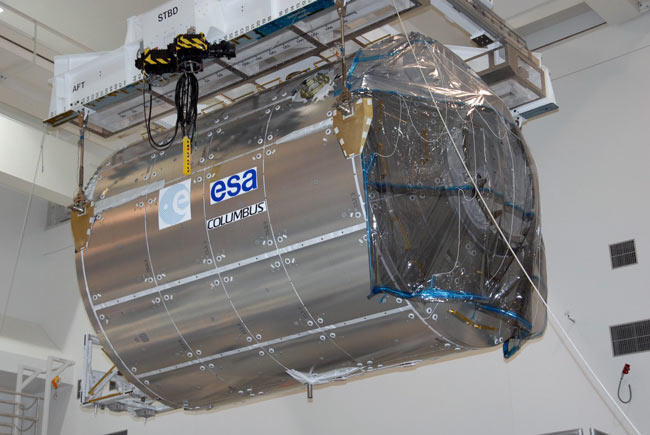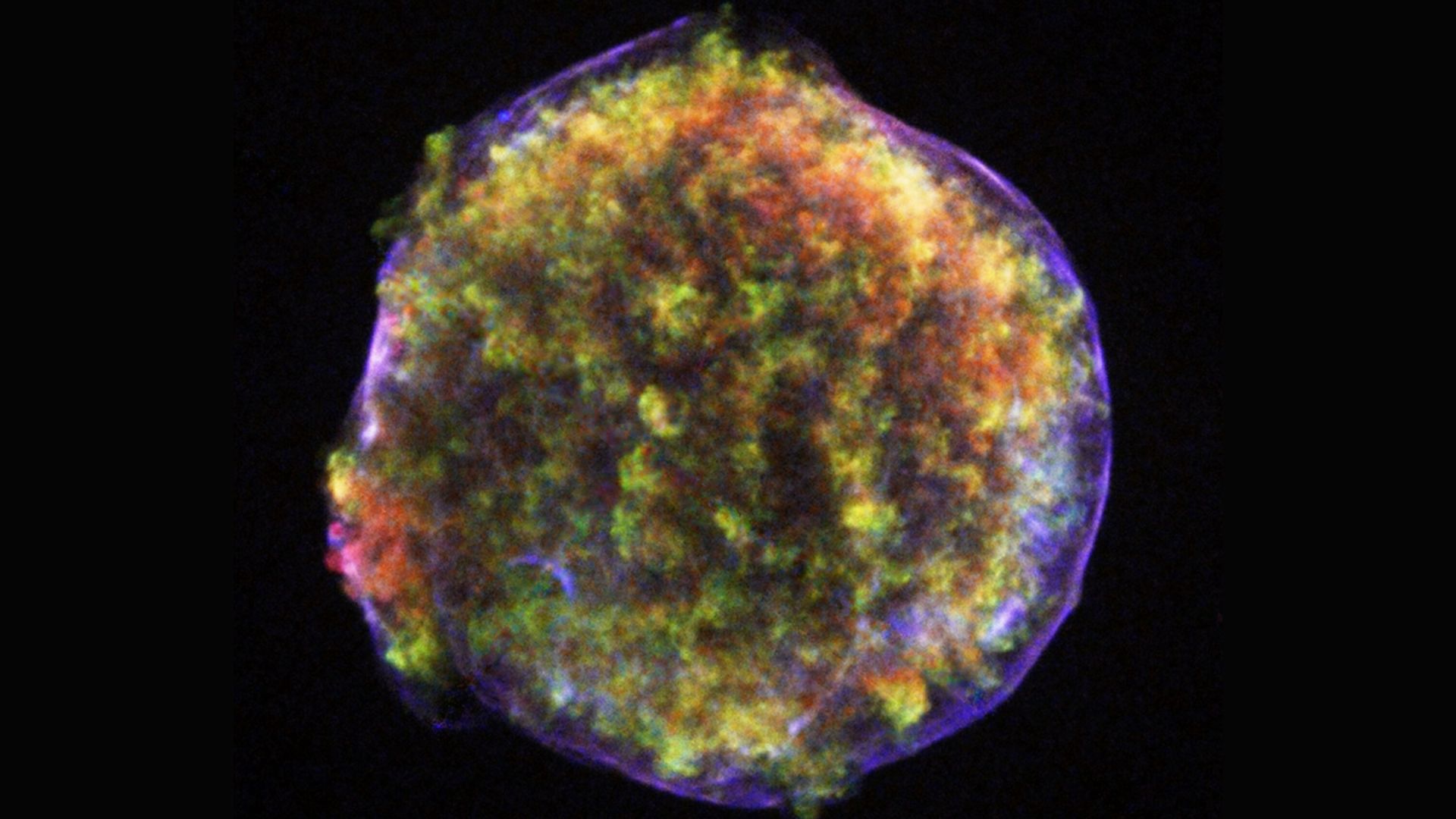Space Station's European Lab Set for December Launch

WASHINGTON - Seven astronauts and a Europeanlaboratory are on track to rocket toward the International Space Station (ISS)next month aboard NASA?s shuttle Atlantis.
Commanded byveteran spaceflyer Stephen Frick, Atlantis?sSTS-122 crew are eager to haul the European Space Agency?s (ESA) Columbus laboratory toward the ISS on Dec. 6.
?It will bea very busy mission with also some spacewalks to do space station maintenancetasks and who knows what else,? Frick told reporters Friday during a series ofmission briefings at NASA?s Johnson Space Center in Houston. ?Space stationassembly missions, these days, are very dynamic.?
Frick andhis crewmates plan to perform at least three spacewalks during their 11-daymission to attach Columbus to the station?s new Harmony node. The station?sExpedition 16 crew, commanded by NASAastronaut Peggy Whitson, will perform two spacewalks of their own next weekto ensure Harmonyand the ISS are ready for December shuttle flight.
?As long aswe don?t run into any major snags with these [spacewalks], the schedule willsupport a Dec. 6 launch,? said Kenny Todd, NASA?s ISS integration andoperations manager, of the planned Nov. 20 and Nov. 24 excursions.
Deliveredby NASA shuttle astronauts last month, the Harmony node is designed to serve asthe anchor for Japan?s three-segment Kibo module and the ESA?s 1.4 billion Euro(US$2 billion) Columbus lab, which will mark Europe?s first permanently crewed sciencefacility to reach space.
?I?m veryproud that we will bring up Columbus, the biggest contribution of ESA to theInternational Space Station,? said Atlantis mission specialist Hans Schlegel,an ESA astronaut from Germany.
Breaking space news, the latest updates on rocket launches, skywatching events and more!
Atlantismission specialist Léopold Eyharts, an ESA astronaut from France, will christen Columbus and stay aboard the space station as a new member of the Expedition16 crew. He will replace U.S. astronaut Dan Tani, who will return to Earth withthe STS-122 crew.
Spacestation joint inspection
NASA is alsodrawing up plans for a late addition to the mission?s third spacewalk thatwould call for STS-122 mission specialist Rex Walheim to inspect a balkysolar wing joint on the station?s starboard side. Mission managers may evenextend the flight two full days and add a fourth spacewalk to perform a morein-depth inspection, NASA said Friday.
Spacewalkersdiscovered metal grit inside the massive gear, known as the starboard SolarAlpha Rotary Joint (SARJ), during NASA?s STS-120shuttle mission last month. After examining samples of grit that were returnedto Earth, engineers found them to be part of the gear?s race ring that rotatesthe station?s starboard solar wings like a paddlewheel to continuously face thesun.
?I thinkwe?re still in more of the investigation stage, and that we can do using ourregular skills for regular tasks,? Walheim told reporters today. ?We?ll justhave to be careful about it.?
Atlantisand its STS-122 crew have a slim, week-long window to launch toward the ISSnext month. The mission will be NASA?s fourth shuttle flight of the year, thelargest number since the 2003 Columbia accident.
?We?ve beenreally fortunate that things have been working so well for us,? said NASAshuttle program manager Wayne Hale, stressing that safety and not schedulepressure will always be paramount. ?This is a story of continuing to payattention to details and not stopping to pat ourselves on the back.?
Hale addedthat NASA shuttle managers will decide sometime this spring whether to proceedwith plans to pull the Atlantis shuttle out of service in 2008, or keep flying the spacecraft until the planned 2010 retirement of the entire three-orbiter fleet.
NASA plansto replace its space shuttles with the capsule-based Orion Crew ExplorationVehicle and its Ares I rockets as early as 2013.
- VIDEO: ISS Commander Peggy Whitson Takes Charge
- NEW IMAGES: Discovery's STS-120 Mission in Pictures
- Complete Space Station Mission Coverage

Tariq is the award-winning Editor-in-Chief of Space.com and joined the team in 2001. He covers human spaceflight, as well as skywatching and entertainment. He became Space.com's Editor-in-Chief in 2019. Before joining Space.com, Tariq was a staff reporter for The Los Angeles Times covering education and city beats in La Habra, Fullerton and Huntington Beach. He's a recipient of the 2022 Harry Kolcum Award for excellence in space reporting and the 2025 Space Pioneer Award from the National Space Society. He is an Eagle Scout and Space Camp alum with journalism degrees from the USC and NYU. You can find Tariq at Space.com and as the co-host to the This Week In Space podcast on the TWiT network. To see his latest project, you can follow Tariq on Twitter @tariqjmalik.
